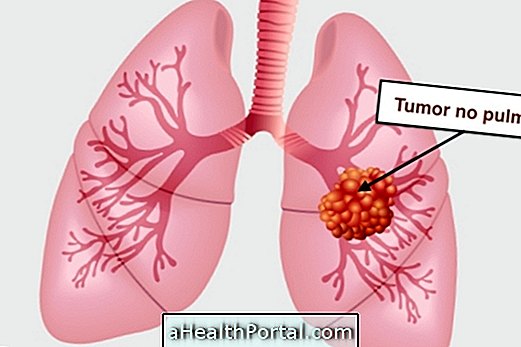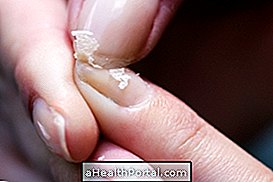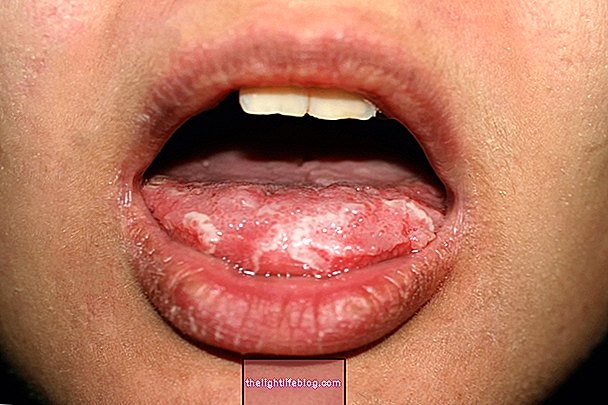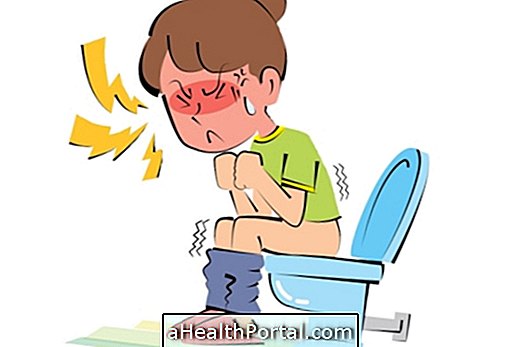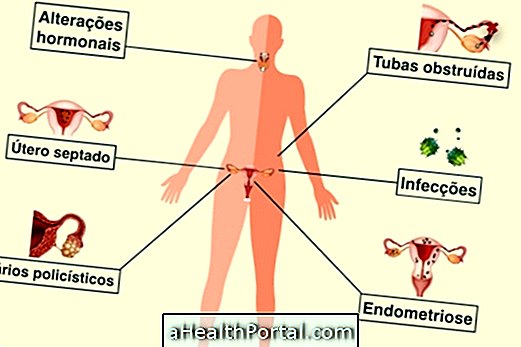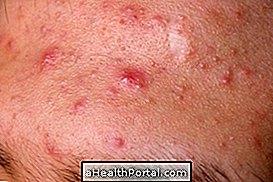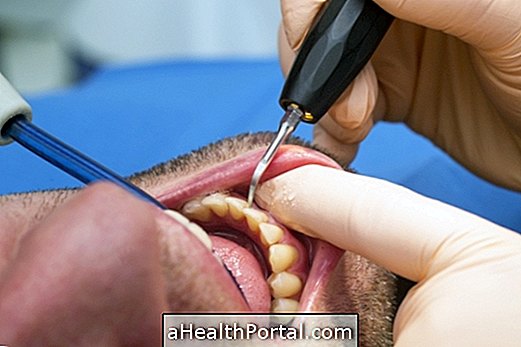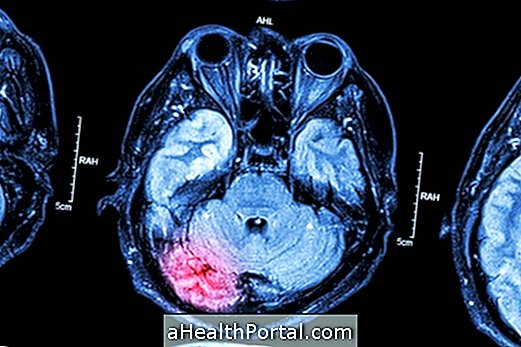Ear secretion can be caused by infections in the inner or outer ear, head or eardrum injuries, or even by foreign objects.
The appearance of secretion depends on what the cause is, but usually has a transparent, yellow or white color accompanied by bad smell if caused by bacteria, or reddish if accompanied by blood.
1. Otitis media
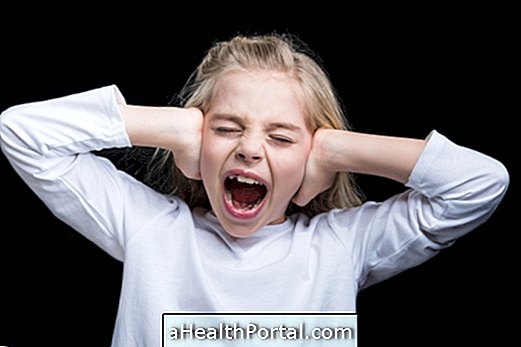
Otitis media or internal otitis is an inflammation caused by viruses and bacteria, or in more rare cases, by fungi, trauma or allergies, which may give rise to an infection, with manifestation of signs and symptoms such as earache, discharge of secretion yellow or whitish with bad odor, hearing loss and fever. Learn more about otitis media.
Otitis is more common in infants and children, and in these cases, it may be more difficult to identify the symptoms. Thus, if the baby has a fever, if he shows irritation, or if he has a hand to his ear frequently, it may be a sign of otitis, and it is important to consult his pediatrician.
How to treat
Treatment consists of the administration of analgesic and anti-inflammatory drugs such as dipyrone and ibuprofen in order to relieve symptoms. If it is a bacterial infection, your doctor may recommend the use of antibiotics such as amoxicillin.
2. Foreign bodies

Foreign objects may be housed inside the ear accidentally or intentionally in the case of children. Normally, objects that get stuck in the ears can be small toys, buttons, insects or food, and can cause pain, itching and discharge of secretion in the ear.
How to treat
The treatment consists of removal of the foreign body by a health professional, who can use a suction machine. In more severe cases it may be necessary to resort to surgery.
3. Otitis externa

Otitis externa is an infection of a region of the ear canal, which lies between the outside of the ear and the eardrum, causing symptoms such as pain and itching on the spot, fever and release of a whitish or yellowish odorous discharge. The most common causes may be exposure to heat and moisture, or use of swabs, which facilitates the proliferation of bacteria in the ear. See other causes and symptoms characteristic of external otitis.
How to treat
The treatment of external otitis consists of cleansing the ear canal with saline solution or alcoholic solutions, and application of topical remedies for infection and inflammation such as hydrocortisone and antibiotics such as neomycin, polymyxin and ciprofloxacin, for example.
If you have a perforation of the eardrum, you may need to use other remedies. Because otitis can cause pain and inflammation, the otorhinol may also advise taking analgesics such as dipyrone or paracetamol and anti-inflammatories such as ibuprofen.
4. Mastoiditis

Mastoiditis consists of an inflammation of a bone that is located behind the ear, the mastoid bone, and may occur due to a complication of a poorly treated otitis, when bacteria spread from the ear to that bone. This inflammation causes symptoms such as redness, swelling and pain around the ear, in addition to fever and yellowing discharge. In more severe cases an abscess may form or bone destruction may occur. See more about mastoidite.
How to treat
Usually treatment is done with the use of intravenous or oral antibiotics with ceftriaxone or ciprofloxacin for 2 weeks. In more severe situations, if an abscess develops or there is no improvement with the use of antibiotics, it may be necessary to drain the secretion through a procedure called myringotomy, or even mastoid opening.
5. Head injury

Severe head injuries, such as a shock or fracture of the skull, can also lead to secretions in the ear, usually with blood.
How to treat
These types of head injuries are medical emergencies, so if they occur, you should go to the doctor urgently.
6. Perforation of the eardrum

The perforation of the eardrum, which is a thin film separating the inner ear from the outer ear, can cause pain and itching of the ear, decreased hearing, or even bleeding and release of other secretions through the ear canal.
Signs and symptoms that may occur during a tympanic perforation include itching and severe earache, tinnitus, and yellow discharge, and dizziness and dizziness may also occur.
How to treat
Usually a small piercing heals on its own in a few weeks to 2 months, and it is advised during this time to cover the ear before taking a shower, and avoid blowing your nose and avoid going to the beach or pool.
In some cases, especially if perforation is large, antibiotics such as neomycin or polymyxin in drops, associated with a corticoid, or the oral intake of amoxicillin and clavulanic acid may be prescribed. In more severe cases it may be necessary to resort to surgery. See more about treatment.
7. Cholesteatoma

Cholesteatoma is a non-cancerous growth of skin in the middle ear, behind the eardrum, which is usually caused by repeated ear infections, but may be a birth defect.
Initially, a foul-smelling fluid can be released, but if it continues to grow, it may feel pressure in the ear, causing some discomfort, which can lead to more serious problems such as destruction of the middle ear bones, affecting the hearing, the balance and the functioning of the facial muscles.
How to treat
The only way to treat this problem is through surgery, in order to prevent more serious complications. After that you should check the ear to see if the cholesteatoma appears again.

